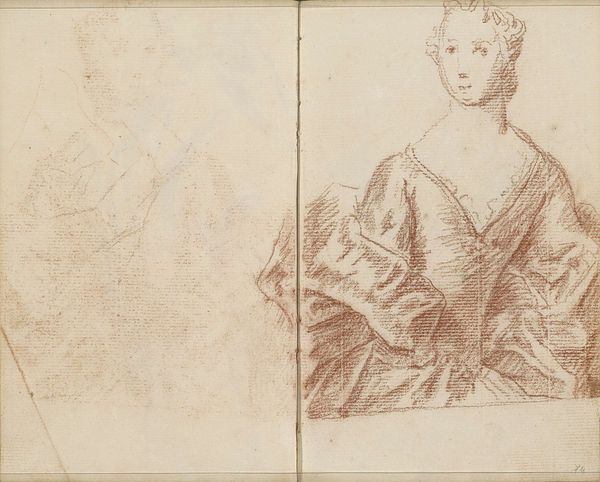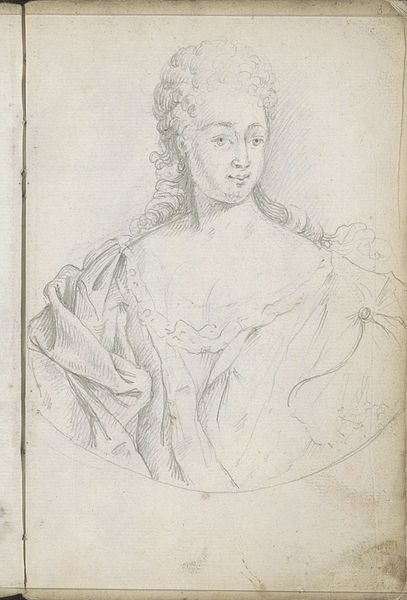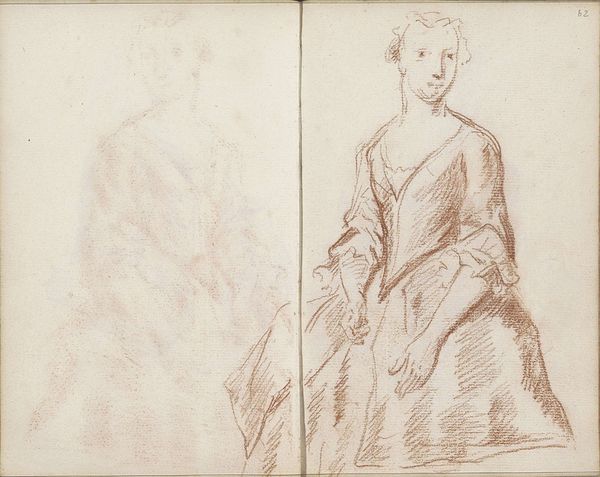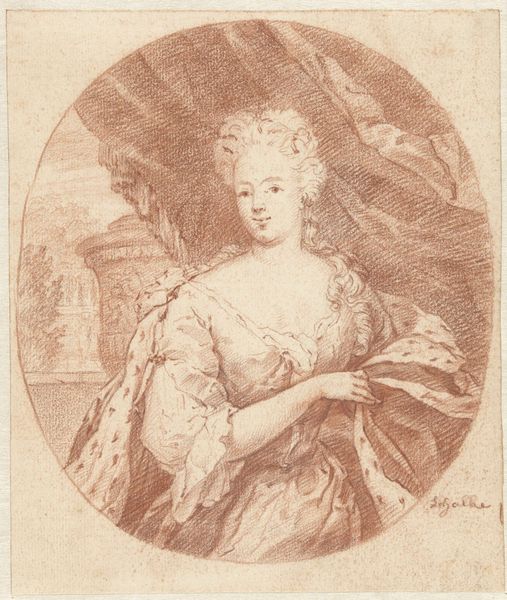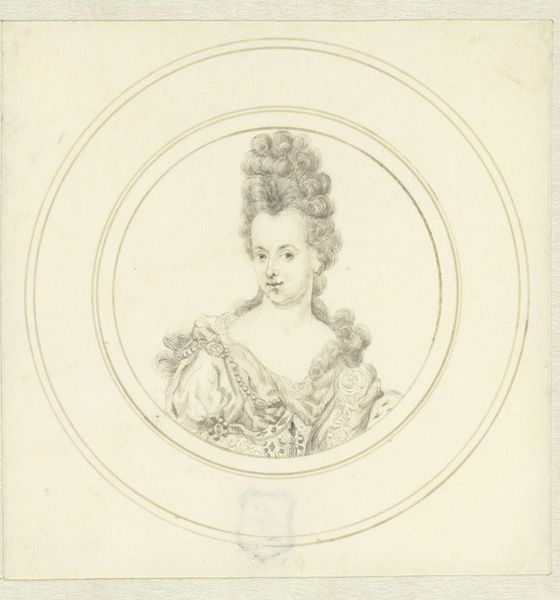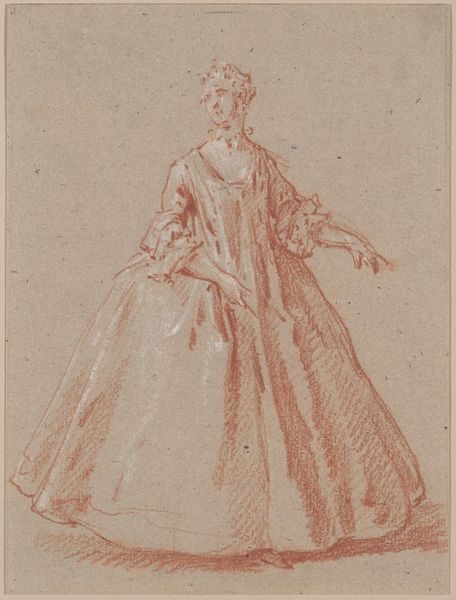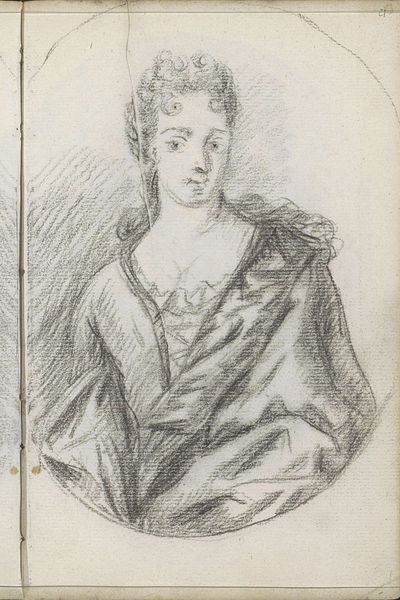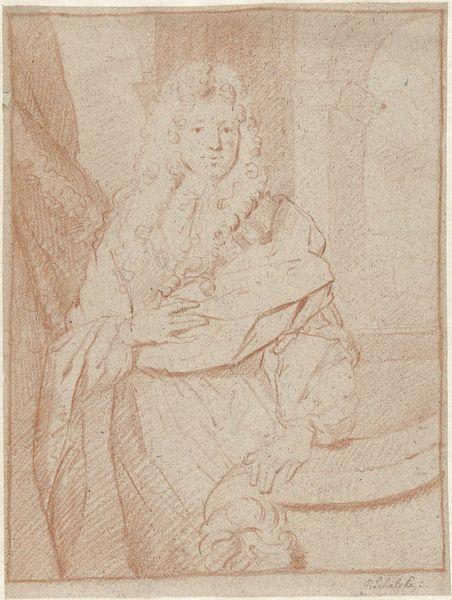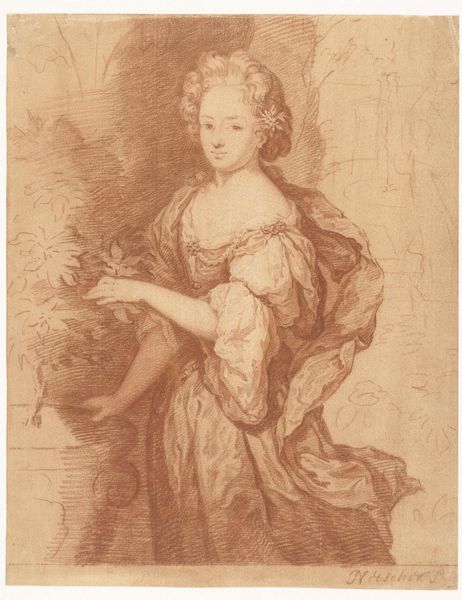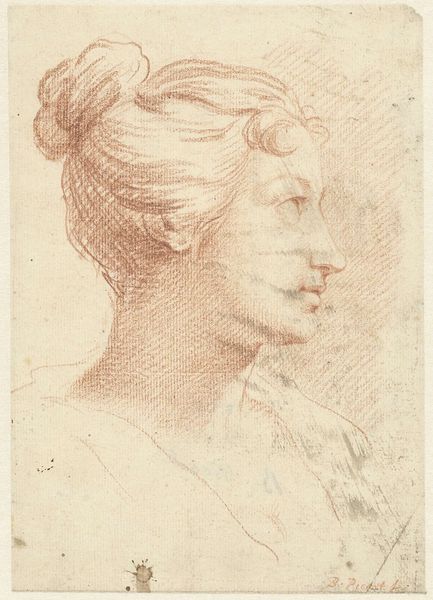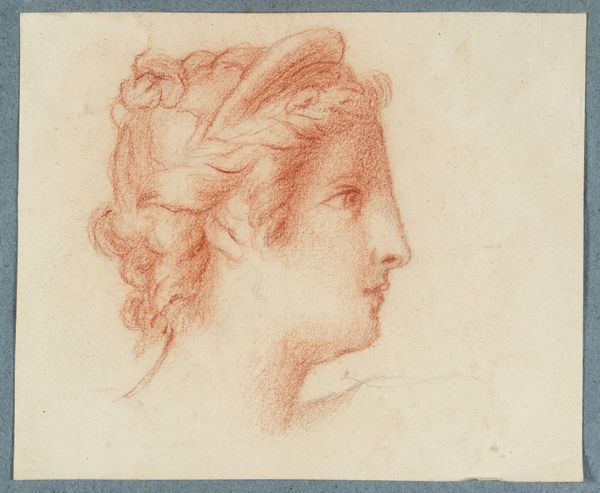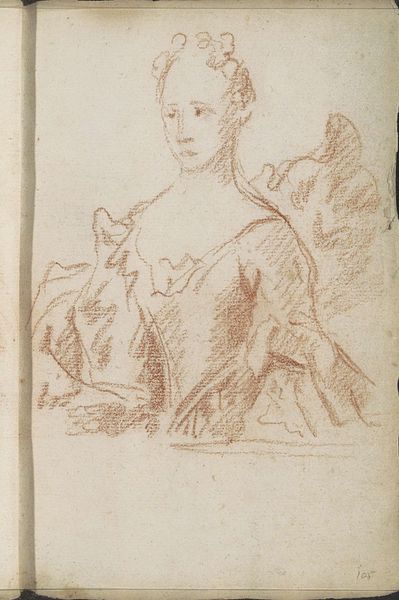
#
amateur sketch
#
toned paper
#
light pencil work
#
pencil sketch
#
sketch book
#
personal sketchbook
#
ink drawing experimentation
#
pen-ink sketch
#
sketchbook drawing
#
sketchbook art
Copyright: Rijks Museum: Open Domain
Curator: Here we have Petrus Johannes van Reysschoot’s “Vrouw in een gedrapeerde japon,” dating from sometime between 1710 and 1772. It’s a quick study, seemingly from a sketchbook. Editor: There’s something melancholic about it, isn't there? The faded ink on that toned paper and the way the image ghosts on the left-hand page gives her such a faraway presence. Like a memory surfacing. Curator: Indeed. Sketchbooks often function as visual diaries, preserving fleeting observations. This drawing provides a glimpse into 18th-century fashion. Observe how the draping of her gown and elaborate hairstyle signal status, echoing the period’s fascination with courtly presentation. Editor: Right. That heavy fabric around her torso looks both voluminous and confining—a walking paradox of class! But, I'm also stuck on that ghostly image, or echo, on the facing page, faded into the other side of the page spread… What to make of it? Curator: I suspect it hints at artistic practice of this time; a second try, a revised notion—the "pentimento" visible even within a spontaneously conceived study page. Editor: In that sense, this single leaf evokes not just an image but the act of creation, the artist trying and then, somehow, letting her just be. Is that ink or pencil, do you think? Curator: A really fascinating point! To me it resembles more ink, considering the delicacy of strokes and a hint of tonal variety, or it's possible that we see light pencil strokes. But those dark values where shadow defines volume suggest a quill pen. Editor: Either way, it's evocative. A whisper of a woman captured in a whisper of lines. Looking at it makes you think about how fashion changed, how appearances shaped perception, and what's worth preserving on paper for the future... and if those things still echo. Curator: An artist’s notebook is often its own time capsule, reflecting aspirations, techniques, and passing fashions; what might have struck Van Reysschoot as routine portraiture yields these surprisingly moving speculations. Editor: And for me it also underscores art-making, especially note-taking, as acts of personal record-keeping and even quiet reflection. Curator: Quite so; visual notes for a world observed.
Comments
No comments
Be the first to comment and join the conversation on the ultimate creative platform.
